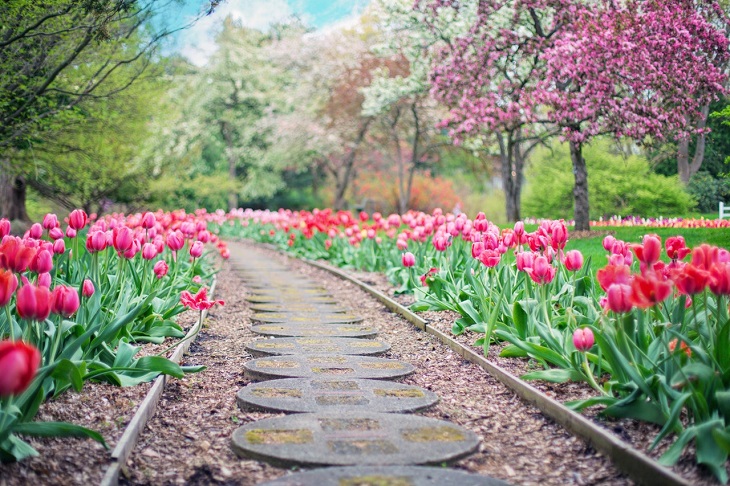Flowers are a nature’s way of showing love to humanity. This post explores how to build a flower bed from the ground up until a colorful array of flowers fills your yard.
Team member, Anne shares her passion for growing flower, explains how to build your own flowerbed, and also shares tips for beautiful, bountiful blooms.

“I am in awe of flowers. Not because of their colors, but because even though they have dirt in their roots, they still grow. They still bloom.”
- Luther Burbank -
Ahh, the many joys have having your own flower bed....
Flowers are a nature’s way of showing love to humanity and displaying the majestic wonders of creation. Wherever a flower blossoms, there you find life. Having a flower bed at your home will create a haven for butterflies, ladybugs, birds, bees and other insects that will flood in and bring your backyard to life.
But that's just the beginning of the benefits of growing flowers.
I have always loved flowers, for as long as I can remember. If you forced me to pick one favorite (oh my, please don't!), I would say daffodils. There is something about the way they look that intrigues me, and they have a delicate smell. Plus, along with crocuses and forsythia, for me they are one of the first signs that Spring has finally arrived.
For most of my life I have been a "renter", and a lot of that was in apartment complexes. If that's you, you may think that growing flowers in a bed isn't possible. But I have always found a way.
In some places, I approached the landlord, and was given permission to actually create a real flower bed — as long as it looked nice and included some perennials so that when I moved, there would be something nice for the next tenant. It was a win-win scenario for us both.
In others, I had to use a temporary solution with flowers grown in containers (especially the time when my apartment was on the second floor, but luckily it had a balcony). In these cases, the win-win was for me — I could take my lovely flowers with me.
Ten years ago I was fortunate to move to a home with lots and lots of space, both for building raised beds for my veggies and growing even more flowers!
I would not consider myself a horticultural expert by any means, but I have certainly learned a lot along the way, and my journey continues as I experiment with different flower bed designs and varieties of flowers.
In this post, I hope to inspire you to do the same!
Together we are going to explore some of the elements involved in building a flower bed from the ground up until a colorful array of flowers fills your yard.
Quick Links - Building a Flower Bed FAQS
In this article we hope to answer the most frequently asked questions about building a new flower bed garden in your yard. Want to go directly to a question? Click the link.
NOTE: I wrote this article during the off-season, so unfortunately there are not a lot of current pictures of my own beds and flowers. More coming next spring!
Did you know there are between 250,000 to 400,000 species of flowers out there?
That’s right! Flowers come in all colors, heights, and smells. Creating a flower bed is one of the best ways to add beauty to your outdoor space this spring. If you build a flower bed from scratch and watch your flowers bloom, you’ll feel excited and pride yourself for the amazing centerpiece of your yard.
For me working in the garden has always been something peaceful — letting me block out the worries of the rest of the world.
I even enjoy the tedious task of deadheading, cup of coffee in hand, as a way to start my morning. And at the end of the day, there is nothing more rewarding than sitting outside just relaxing, taking in the beauty. It's even better when I get to watch the butterflies, bees and hummingbirds who appreciate the flowers just as much as I do.
Before we get down and dirty to the actual construction of a flower bed, let’s explore some of the reasons you should invest your time and energy into building a one.
Flowers Can Help Reduce Stress and Improve Memory
Studies have shown that fresh flowers can help decrease anxiety. No wonder when visiting a loved one in the hospital, you often grab a fresh bunch of flowers to help improve their mood and relieve some of the stress created by their surroundings.
Filling your backyard or patio with flower plants such as turmeric and thyme (which also makes a great ground cover that can stand up to foot traffic and helps release the smell), will do your memory some good. There are also non-flowering herbs that are not only edible but also ornamental such as rosemary, peppermint and sage — they look lovely growing among flowers, not just in your veggie garden. Placing a bowl of rosemary in your living room will not only fill it with an exotic scent but has been found to improve one’s memory.
Boost Mental Health, Mood and Emotions with Flowers
Research has shown gardening and planting stuff has a therapeutic effect. Building a flower garden from scratch to watching your flowers bloom into beautiful pieces of art will give you a sense of achievement and boost your mental health.
Flowers have been proven to have an immediate impact on happiness, accompanied by a sense of excitement and joy. But the impact is not just short term — they help to improve over all life satisfaction. Receiving and giving flowers builds intimate connections between friends and family.
Red roses are often associated with love while blue daisies bring an aura of tranquility and peace. Having different flower beds with differently colored flowers will create several moods in your backyard which can do magic to your life.
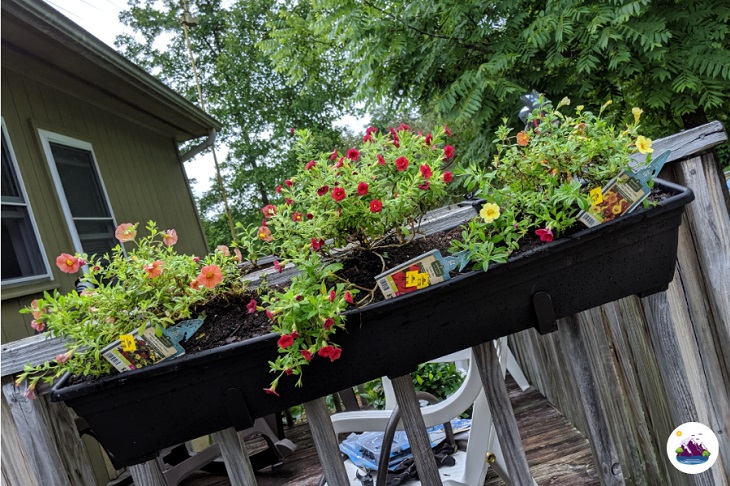
Don't have space? Make a container garden! I got this planter and adjustable hanging brackets at Lowes, and I only paid $1 a piece for the flowers by getting the plants in their clearance section.
Gardening is Good Exercise
It's pretty obvious that the digging the ground for that brand new flower bed is going to be hard work, but studies show that even routine maintenance tasks like weeding, watering and pruning will burn those calories. When done properly, gardening provides the three kinds of exercise that we all need in our lives — strength, flexibility and endurance.
According to Jeff Restuccio, author of Fitness the Dynamic Gardening Way, it can even be a good aerobic exercise if you build it into your routine with some extra “steps” such as stretching first, switching hands when you rake and alternating between light, moderate and high intensity activities.
Bottom line — gardening gets you moving, in a way that is much more enjoyable for many people than going to the gym. Plus, it’s inherently relaxing and calming.
You'll Also Sleep Better
Not only will getting the exercise that comes with gardening help you sleep better at night, but so will the sense of accomplishment that it brings. Can’t you just imagine how good it will feel, sitting back and enjoying the fruits of your labor? The smile on you face when you look at the flowers on your table, knowing “I did that!”?
One of the most common things that effects a person’s ability to sleep is stress. And between the movement that goes with gardening, and the fact that flowers, in and of themselves, have a positive effect on moods, emotions and stress, you should definitely be getting a better night’s sleep when you create your very own flower bed.
By the way, if you often have insomnia, then there’s one flower that you should never lack in your garden – lavender. The smell of this flower is said to improve your heart rate helping you relax and drift to slumber land. As much as it won’t cure your insomnia, it sure will improve your bedtime routine.
Attract Bees, Butterflies and Hummingbirds
Depending upon the flowers you choose to plant, your garden can be designed to be a wonderful delight for bees, butterflies and hummingbirds. Not only are these types of flower beds beautiful to look at, they are a way to provide much needed nutrition and food.
Video: Butterfly and bee buffet created by staff horticulturalist at Eden Brothers
Tutorial: How to Create a Butterfly and Bee Garden | Courtesy of Eden Brothers
If you also have a vegetable garden, creating a flower garden that attracts these different pollinators is great organic way to increase your harvest.
Bonus: There are many flowers that will attract all three – bees, hummingbirds and butterflies (as well as other types of birds)!
By the way, on the opposite end of the spectrum, if you have problems with insects, deer and other animals, there are also flowers you can plant to naturally deter them. For example, while the pollinators love cosmos and bee balm, deer will avoid them. Marigolds are an interesting flower – honeybees don’t mind the strong scent because they want the nectar, but other bees and wasps stay away, and so do the deer and rabbits.
Gardening Provides Quality Family Time
There once was a time, when children played outside, I mean really played — they got dirty, they sweated, and they had fun! Not so much anymore with all the tech in their lives. On top of that, with our busy schedules, we have lost many simple opportunities for quality time with our families.
Gardening as a family, whether it’s a flower bed or a vegetable garden, is an excellent way to bring all of that back!
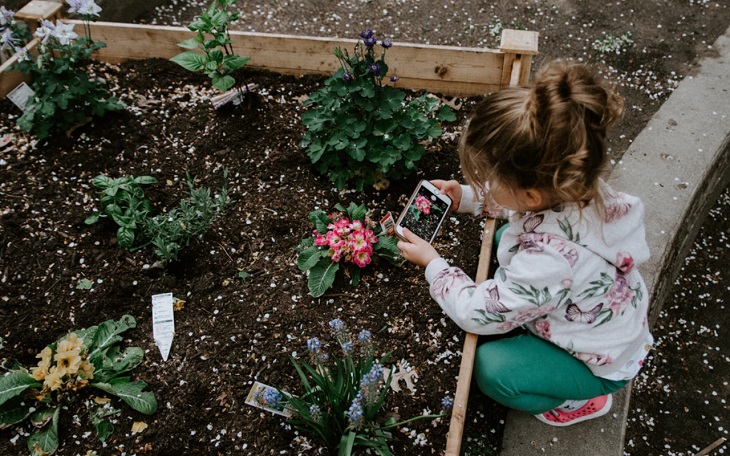
Young Girl Taking Picture of Freshly Planted Flowers in Garden | Photo by Kelly Sikkema on Unsplash
Studies show that creating a garden can teach your child about science, nature and the growing process, as well as other important skills and lessons such as mathematics, record keeping and planning, pride in a job well done, patience, and cooperation.
Gardening can help families grow stronger, build bonds, create memories and provide a sense of togetherness.
Sharon Lovejoy, author of Country Living Gardener: A Blessing of Toads, provides this important tip: "Never make cutting the grass or helping a punishment." Instead, make it something they eagerly look forward to doing with you as a family activity. Children, no matter what the age, will delight in seeing all their hard work come to life and you will be teaching them valuable lessons that will last a lifetime!
Endless Supply of Flowers for Your Home and To Share
We couldn't end a list of benefits of having your own flower garden without stressing the fact that if you choose some varieties of long-stemmed flowers, you will have your own "backyard florist shop."
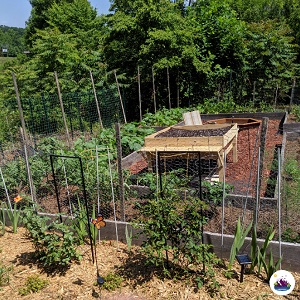
Early spring, roses and gladiolas waiting to bloom.
By creating what is often referred to as either a bouquet garden or a cutting garden, you will save money and always have access to fresh flowers for your table, to bring to work, or give away to friends.
If you do some proper planning, select not only summer cutting flowers, but also spring ones like daffodils and tulips, as well as late fall bloomers such as dahlias, coneflowers, mums, hydrangeas and sunflowers.
It will truly seem like an never-ending supply of beauty.
And while roses take a bit of work, you'll save tons on the cost of buying them from a florist if you plant your own.
But what about winter?
Select flowers that stand up well to drying and throw away all those artificial flowers (aka dust collectors). Simply replace the dried flowers each spring with fresh ones from your garden!
Factors to Consider When Preparing the Ideal Location for Your Flower Bed
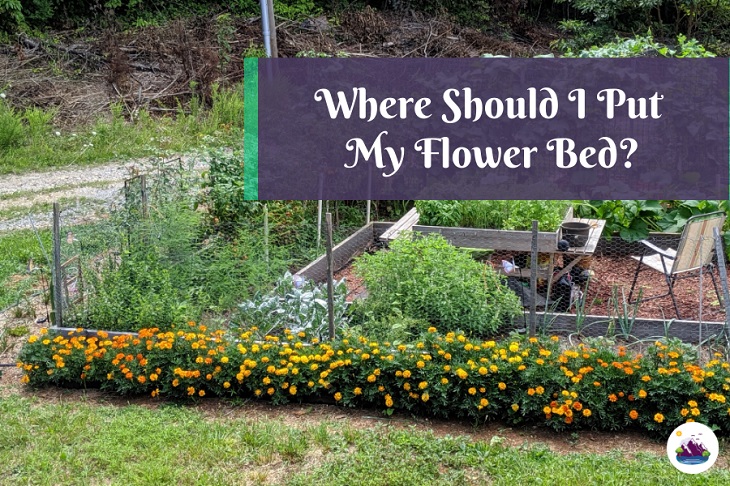
Simple Marigold Flower Bed to Detract Pests from Vegetable Garden | Photo by Author
Now that we have explored several reasons that make a flower bed project worth your time (besides it just looking fabulous) let’s look at some of the factors you need to keep in mind before you dig out your flower garden.
Even before you get digging and lay out your flower bed, you have to prepare a couple of things. Proper preparation will determine the success of your flower bed.
To prepare, here are a couple of things that you need to consider:
Your Favorite Spot
The first thing you have to decide is where your flower bed will go. Favorite spots for flower gardens are in the back yard, front patio, along a fence or under a window sill. Ideally, any spot you choose will be complemented by a flower bed. Some varieties, like creeping thyme also do well between rock pavers!
Includes free bonus ebook on organic gardening
One thing to keep in mind when choosing your location (and the size of your bed) is the amount of work you want to put into the project.
Is there a lot of underbrush, rocks and debris that will need to be cleared away first?
Or will it simply be a matter of removing grass and weeds?
If you don't have a lot of time, don't let that stop you from planting a flower garden.
You can start small the first year and expand later. Or you could opt for a container-style flower bed that simply needs placement, some soil, and you are ready to go!
Amount of Sunlight
Most flowers, just like other plants, require exposure to sunlight for a minimum of six hours each day. Therefore, when selecting a suitable site for the flower garden, you have to factor in the aspect of exposure to sun especially if you are dealing with most annual flowers.
If you don’t have a spot for full sun, there are flower varieties that thrive in shade. The important thing here is to make sure that when it comes time to picking the flowers you will plant, is that they are a fit for the amount of sun the location gets.
Consider Soil Type
Good soil is the backbone for any plant, including flowers. But the good news is that there are all different types of plants, that like different types of soil. You can either find ones that match the existing soil conditions.
Or if all your favorite spots have poor quality soil, you can consider importing garden soil and enriching it with compost for good quality flowers (we'll talk more about soil and drainage in just a bit).
Avoid setting your flower garden on a rocky area or on clay that easily clogs and may damage your flowers. Now, that doesn't mean you can't actually design a rock flower garden — it just means you will have to take those things into consideration when designing your flower bed and choosing plants that will thrive under those conditions.
DIY Flower Bed Designs
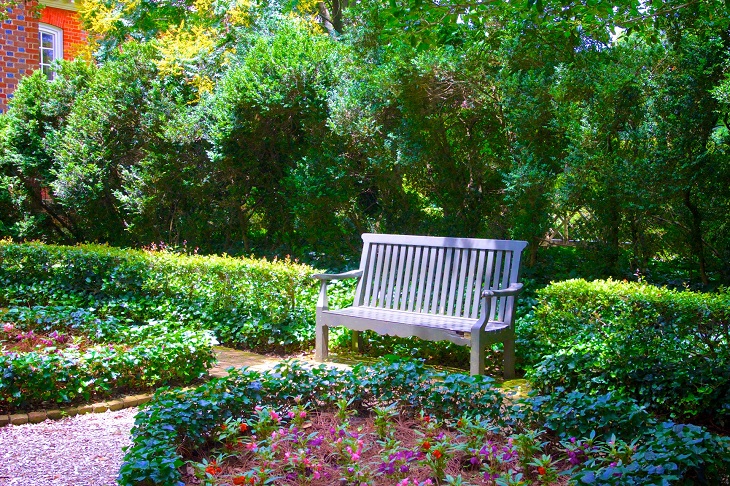
Relaxing Park Bench in Colorful Flower Bed | Photo Ken Kistler at PublicDomainPictures
Let’s now enter the fun part of flower gardening – design.
Here, you are allowed to let your imagination run wild since there are unlimited options for flower bed designs. Often people restrict themselves to a flat flower garden, yet you can opt to go cheeky and bold or fun and colorful. There is no limit to how your flower garden should look.
To kick start your thought process, here are several flower bed ideas you can consider:
Video: This Old House contractor Roger Cook shows how to attract butterflies to your garden
Tutorial: How to Plant a Butterfly Garden | Courtesy of This Old House
These are just a few ideas to get you going, but the list is endless. Play around with different flowers and designs to bring your garden to life.
Choosing Flowers for Your Garden Bed
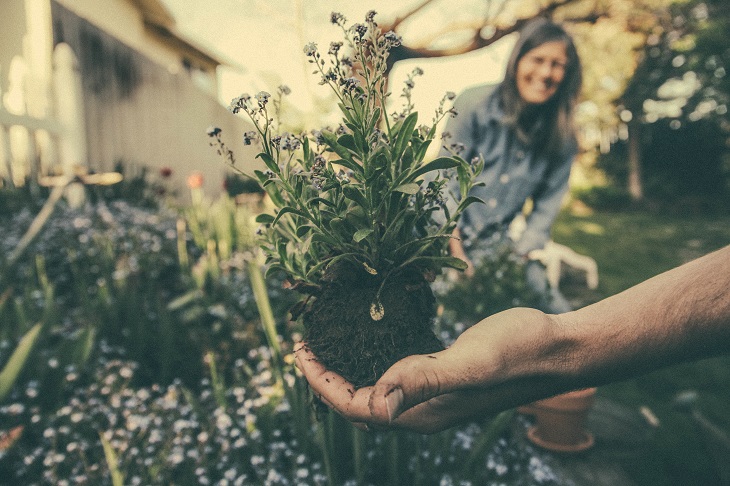
Getting Ready to Plant Flowers in Garden Brings Smile of Joy | Photo by Benjamin Combs on Unsplash
Besides the obvious matter of choosing flowers that are appropriate for your zone (and of course are your favorites), there are other things to consider when picking what flowers and ornamentals you will have in your garden.
One of the first considerations has to do with the time of year of when you are starting your raised bed garden. Depending on the timing, there are a wide variety of flowers that you can grow from seeds, either directly in the ground or starting them indoors, and this can save you money.
There are also plants that can be started from bulbs or tubers in spring, such as many lilies, begonias, dahlias, gladiolas and elephants ears, that if you are starting early enough (but of course after the last frost unless otherwise specified is good for the plant), can provide you beautiful summer blossoms.
If you are starting later in spring, or even into summer, you will need to get plants that are already in the “growing process” from your local nursery. The wonderful thing about flower gardens is that even if it’s late in the season, there are plants available to get you started.
Late summer or early autumn? It’s not too late for a beautiful fall flower garden!
Go ahead and break ground for next year’s garden and choose cool-weather resistant flowers like chrysanthemums, pansies, violas, ornamental flowering kale and marigolds for immediate color. Want to feed butterflies and bees in the fall? They love aster!
Depending upon your zone and the timing, you can add bulbs that will flower the following spring (or at least order them so you can plant them when the timing is right). Tulips, daffodils, crocus, and paperwhites are just a few examples of flowers that will add color to your flower bed each year long before the new planting season begins (or before the perennials come into bloom). In addition, depending on the flowers, there are many summer bloomers that can be planted at the same time!
The other main consideration is whether you will be planting perennials, annuals or a mixture of both. When planting perennials that will spread over time, using annuals during the first year of planting is a good way to fill up space until they mature.
Differences and similarities between annuals and perennials - tips for gardening with both
Tutorial: Annuals vs. Perennials: Which to Plant? | Courtesy of HGTV Gardening
Some other questions to ask yourself, include whether you want to choose flowers...
Step By Step Guide for Building a Flower Garden
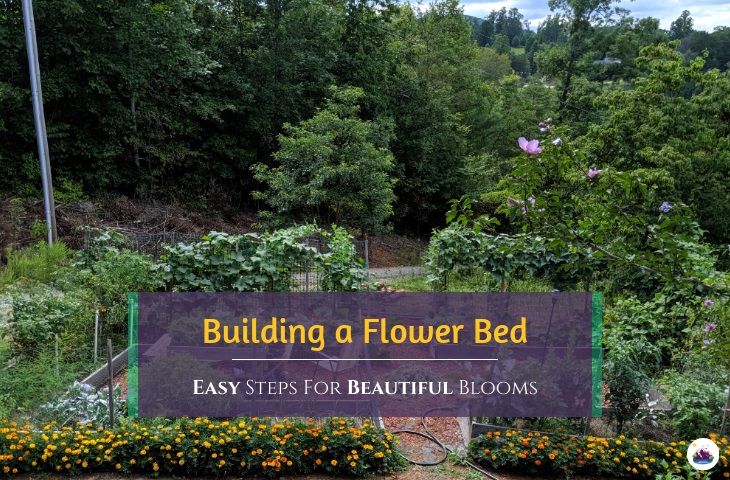
After you have done all the necessary preparations, settled on the design, and what flowers you will want to plant, let’s begin the real work. If you have chosen a “container-style” flower bed, the first few steps may not apply to you, depending upon the type of container and where it will be placed.
Video: Step by step instructions to create a new garden bed
Tutorial: How to Create a New Garden Bed | Courtesy of Step-By-Step Gardening from Spring Hill Nurseries
Step 1: Mark It Out
Giving your flower garden a nice shape will spice up your space and can even be used to echo the layout of your house. For a better layout, you can outline using a garden hose to see how it looks. You can either draw your rough design out on paper in advance, or you can free-flow it, moving the hose around to see how it looks.
Step back, take a look at it from different angles and make adjustments as necessary. Once you're happy with the look, mark the edges using sand, flour, or a plant-safe turf making paint similar to what they use on golf courses, then remove the hose.
Step 2: Eliminate the Grass (or Weeds)
If you are planting a brand-new flower garden in an area of your yard where there is grass, it has to go. Use a spade to dig out grass from the marked area. If it’s good quality grass, dig down several inches and work in small squares (about the width of your shovel from each side) so you can lift up the section so that you can move it to other areas as filler. If it’s sod or well-established grass, you can use longer rectangular strips and roll the section for transport.
Alternatively, if you are patient enough to wait a couple of months (for example, if you are just getting the ground ready in late fall/early winter for next spring), you can mow the grass to the lowest level then cover it with newspapers and compost and wait for it to die naturally.
Even if it’s just weeds and wild growth, you will want to get rid of that top layer to start your flower bed off for success. If all you do is start tilling and digging, you risk of those weeds growing right back up in the middle of all your beautiful flowers. The extra work now, will save you hours of weeding later.
Step 3: Check How Well the Soil Drains
Proper drainage is essential for a great flower garden, but how can you tell if there is proper drainage for your flower bed?
Conduct a soil drainage test by digging a few flat bottomed, 12 x 12-inch holes in different spots of the bed. Fill the holes with water, and then wait until the next day — waiting allows you to conduct the test with “wet” soil, which will simulate real world conditions when you get a lot of rain (and help you determine how often you will need to water your garden).
Now, fill the holes again.
Keep an eye on the hole to see how long it takes for all the water to drain.
Ideally you want to conduct this test for soil drainage before you start digging and tilling so that you can see what the natural conditions are for the location. This will give you an idea of what you need to purchase in advance, and you can till in any necessary soil amendments in one step.
For areas where the soil is really bad (or if you just don’t feel like digging!) , you may want to skip step 4 (other then removing the big stuff) and create a raised bed for your flower garden that adds an additional layer of at least 6 to 8-inches of quality soil on top of the ground.
Step 4: Prepare the Soil – Dig! Dig! Dig!
Once the grass is gone, start tilling your garden, removing rocks, stumps or roots.
How far do you need to dig for a new flower bed? You will need at least 6 to 8 inches to make sure there is plenty of room for the roots to grow (some plants and flowering bushes may need a deeper depth, so do your research). A rototiller will work wonders here. If you don’t have one or won’t have a need for one in the future, many hardware stores make them available for rent.
How you prepare the soil will in part be determined by the results of the soil drainage test. If the quality of the soil is not great, or there isn’t good drainage, you will need to amend the soil some, beyond the normal working in of manure, compost and/or fertilizer to enrich your soil and add valuable nutrition for your plants.
Video: Roger Cook shares tips for growing flowers in stubborn clay soil
Tutorial: How to Plant a Flower Bed in Clay Soil | Courtesy of This Old House
Poor soil drainage is often caused be either too much sand (quick drainage) or too much clay (slow drainage).
One great soil amendment is sphagnum peat moss and it works to improve both sandy and clay soil. For the clay, it provides aeration and for sandy, soil it adds mass. You may also want to work in a good quality garden soil along with the organic matter and fertilizer.
Before you start planting, conduct another soil drainage test after amending your soil to make sure the ground is good to go!
Step 5: Create a Border and Site the Flowers
Creating an edge between your lawn and your garden is important to mark the periphery of the bed. Digging a trench of about eight inches and a few inches wide can help prevent unwanted invaders from tampering with your garden. If you have chosen a wood border design, check out these instructions on how to build a raised bed garden frame.
Next, you want to determine where each of your plants will go. This step may take quite some time deciding where each flowering plant goes, but the benefit of doing so is a well-spaced flower garden. Siting ensures a beautiful and organized garden. Place them on the bed and see how they look.
Keep in mind to group plants according to sunlight and watering requirements. You don’t want flowers that require a lot of water, next to ones that prefer to go dry between watering, or plants that require full shade with ones that need full sun. You also want to consider how much each plant will spread during the season. Placing plants to close to each other during the initial planting does "look nicer and fuller" but in the long run you will end up with an over-crowded garden and prevent your flowers from growing to their full potential.
Tip: If you have some of that turf paint left, you can mark the spots so that you don’t have to work around a bunch of flower pots. Afraid you will forget what goes where? Draw a mini-design on paper.
Step 6: Plant Your Flowers
Once you have marked where each of the flowers and ornamentals will go, start planting. It’s helpful to ease out the roots of the flower before putting it into the ground for better root development. Make sure you follow the planting instructions for each plant on how deep the plants need to go, and how far apart they need to be spaced (which you should have determined in step 5, but it’s important enough to mention again).
Tip: If your garden plan includes only a few select larger plants (or not a lot of plants placed close together), you may want to put down a layer of weed barrier cloth across the area. Then, in the spots where the flowers will be planted, you can cut an X in the cloth, large enough so you can pull it back while digging the hole (you can use small rocks to hold it out of the way). Once the plant is covered, fold back the weed blocker, cutting of the points at the edge as needed so that it fits nicely around the base of the plant.
Step 7: Add a Layer of Mulch and Water Your Bed
Spreading mulch over your garden will add value to the flower bed by reducing the rate of evaporation and reducing the amount of maintenance required. A 2-inch layer of mulch using sawdust, straw or wood chips can help keep weeds at bay and improve water retention — plus it looks nice!
Once the mulch is spread, and the plants are firmly in the ground, give them a soaking using a watering can or light spray from a hose. Giving your flowers a good amount of water from the start will ensure good growth.
During the early days after planting, flowers may need more “manual” watering until roots are established. But be careful not to over-water and flood them!
How to Care for Your Flower Garden
After the above steps, you will need to look after your precious flowers to see them through to the blossoming stage. For your flowers to grow and glow, you will need to carry out extra tasks to keep your garden looking and growing its best.
Video: Gardening advice and tips for taking care of a flower bed
Tutorial: How to Care for Your Flower Bed | Courtesy of eHow
Let’s look at a few maintenance tips that will keep your flower bed beautiful.
A Few Final Words...
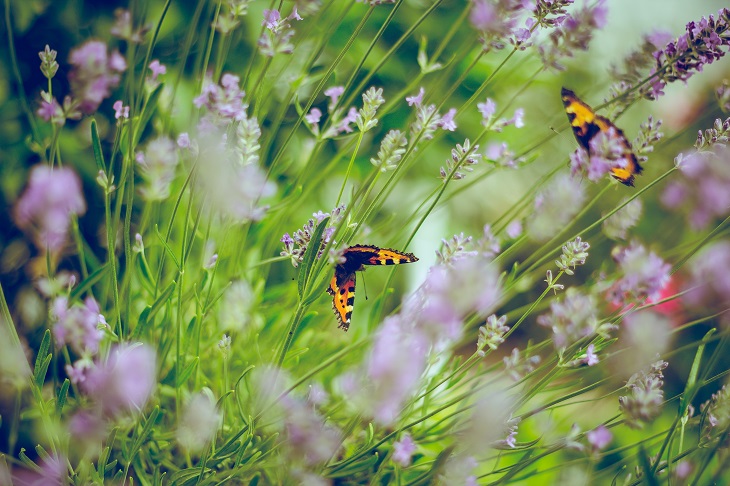
Attracting Butterflies to Your Flower Garden | Photo by Emiel Molenaar on Unsplash

“Gardens and flowers have a way of bringing people together, drawing them from their homes.”
- Clare Ansberry -
I sure hope you are now ready and better equipped to build a flower bed and nurture your flowers this spring through summer.
Yes, tending to flowers can be time-consuming and a little labor intensive, but the rewards are amazing.
With the right gardening tools and planter boxes, you will be well on your way to a beautiful display of all types of flowers this spring, summer and well into fall. Get creative and let your tenderness reflect through your flower bed.
You will find that gardening, and more so flower gardening, will become one of your favorite hobbies. And don't forget to get those kiddos involved!
Enjoy the journey and remember to gift a loved one a beautiful bouquet once the flowers blossom!
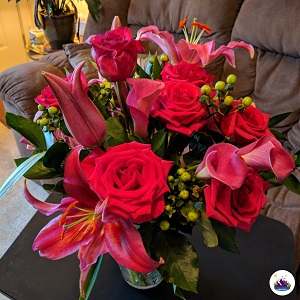
Bouqs Serene Bouquet — beautiful a week and a half later!
Confession time...
I am addicted to having flowers in my house. If there are none in my garden ready to be picked, hold be back when I pass the fresh flower displays in the supermarket!
So you can imagine my reaction when I saw a company called Bouqs on Shark Tank a few years back. Well last winter I finally tested them out, and I have to say I was impressed both by the variety of options and how long the flowers last when you follow their instructions.
Personally, I went for the subscription plan, because of the savings, and I love that I can choose the frequency, pause it during garden season, or I can switch the delivery to go to someone else as a friend.
I have had 7 different bouquets delivered so far, and only had problems with one. But for that, all I had to do was use their quick contact button, give them a picture, and they sent a replacement.
So, Bouqs gets an A+ for customer service from me too.
I've been taking before and after pictures of every bouquet and plan on writing a full review one day soon.

